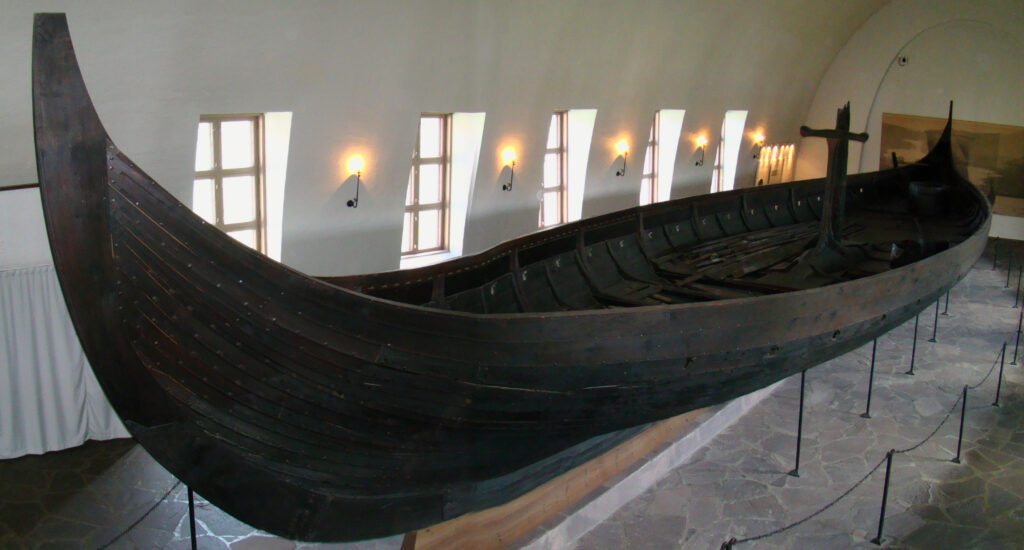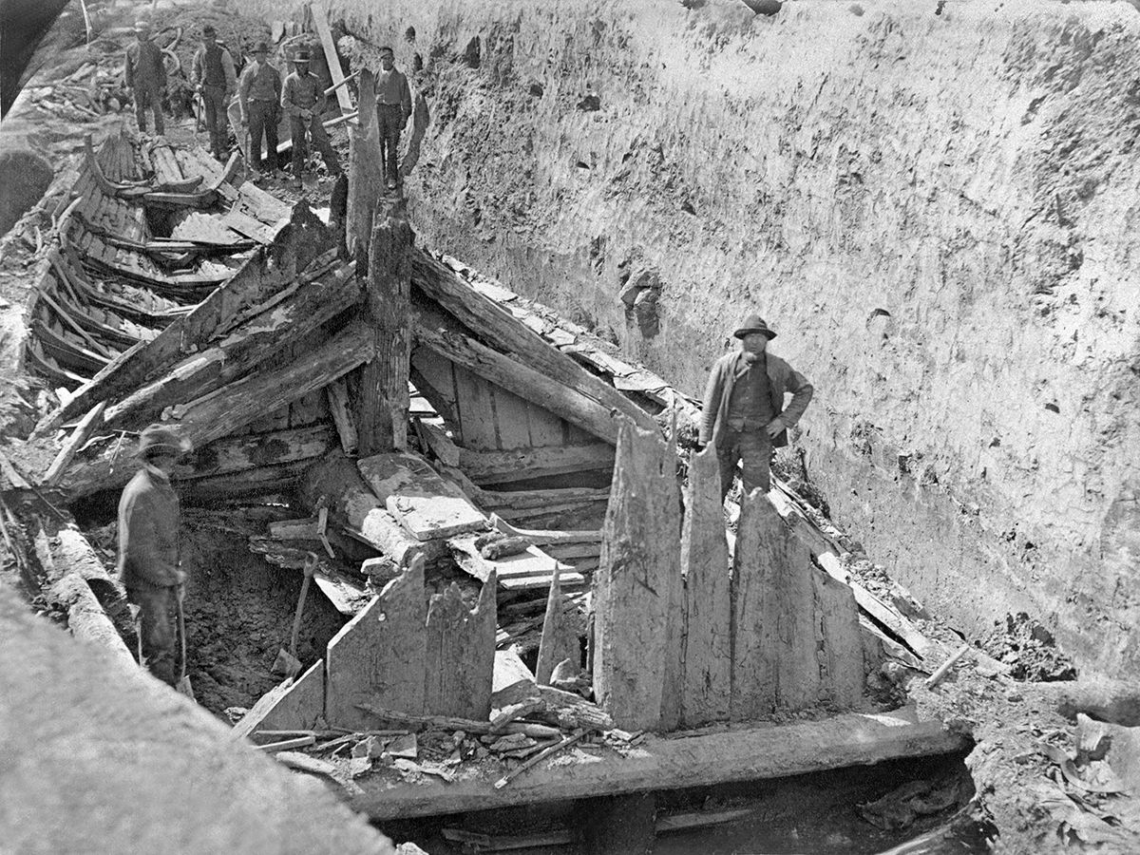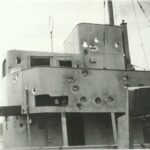The Gokstad ship is a well-preserved Viking ship discovered in a burial mound at Gokstad, in Sandefjord, Vestfold, Norway. It dates back to the late 9th century and is considered one of the finest examples of Viking shipbuilding. Here are some key details about the Gokstad ship.
Text: Created with support of AI.
The ship was unearthed in 1880 by Nicolay Nicolaysen, a Norwegian archaeologist. And found in a burial mound known as the Gokstad mound (Gokstadhaugen).
Features of the viking Ship
The ship is approximately 23.24 meters (76.3 feet) long and 5.10 meters (16.7 feet) wide. It is made primarily of oak, with clinker-built planks (overlapping planks). It has a sleek and graceful design, suitable for both ocean voyages and river navigation. The ship’s construction allows for flexibility and strength, essential for handling the rough seas.

What do we know about the male found in the mound
The male buried in the Gokstad ship is believed to have been a prominent Viking chieftain or nobleman. Several details about him have been determined through archaeological and forensic analysis. The man was likely between 40 and 50 years old at the time of his death. He was quite tall for the time, measuring approximately 181 cm (about 5 feet 11 inches) in height. Analysis of his skeletal remains indicates that he had suffered from various ailments and injuries. For instance, he had healed bone fractures, including a broken thigh bone, which suggests he experienced significant physical trauma during his life. There are also indications that he might have suffered from a disease such as tuberculosis or a severe infection, which could have contributed to his death.
The richness of the grave goods and the grandeur of the ship burial indicate that he was a person of high status. Viking ship burials were reserved for the elite, reflecting their wealth, power, and social standing. The burial included various items meant for the afterlife, such as weapons (swords, spears, and shields), household utensils, and personal belongings. Additionally, remains of animals, including horses, dogs, and possibly a peacock, were found, further signifying the man’s wealth and status.

Other findings
The ship burial aligns with known Viking traditions, where significant individuals were often interred with great ceremony and valuable goods, believed to assist them in the afterlife. The use of a ship for the burial underscores the importance of seafaring and maritime prowess in Viking culture. Though many of the weapons might have been removed by grave robbers before the excavation, typical items would include swords, spears, shields, and possibly axes.
Household items such as wooden utensils, possibly used for cooking or other domestic purposes. Items that might have included grooming tools, clothing fragments, and other personal effects.
Remains of at least twelve horses were found, likely meant to serve the chieftain in the afterlife. Several dogs were also buried with the chieftain, indicating their importance in Viking life. There were also remains of other animals such as peacocks, which were rare and exotic, symbolizing wealth and status.
Fragments of three sleds were found, indicating the use of sleds for transportation, especially in winter conditions. Remains of tents or tent-like structures suggest the inclusion of portable shelters. Items such as fishing hooks and other fishing-related tools.
Various wooden objects, some of which were intricately carved, reflecting the craftsmanship of the period. Various tools and implements that might have been used for daily activities or specific tasks.The deceased was placed in a burial chamber built within the ship. This chamber was constructed to hold the body and some of the grave goods, protecting them from the elements.
The findings provide a glimpse into the social hierarchy, burial practices, and daily life of the Viking Age. The elaborate nature of the burial suggests the man held a prominent role in his community, potentially as a warrior leader or a chieftain.
Historical Significance
The ship was used as a burial chamber for a wealthy individual, believed to be a Viking chieftain. The grave contained the remains of the chieftain along with grave goods, including weapons, household items, and animal remains. The Gokstad ship provides valuable insights into Viking maritime technology, craftsmanship, and their seafaring capabilities. It also highlights the Viking tradition of ship burials for high-ranking individuals.
Current Location
The Gokstad ship is currently on display at the Viking Ship Museum in Oslo, Norway. The museum also houses other significant Viking artifacts and ships, including the Oseberg ship and the Tune ship. The Gokstad ship is celebrated for its excellent state of preservation and its representation of Viking nautical engineering and burial customs.










